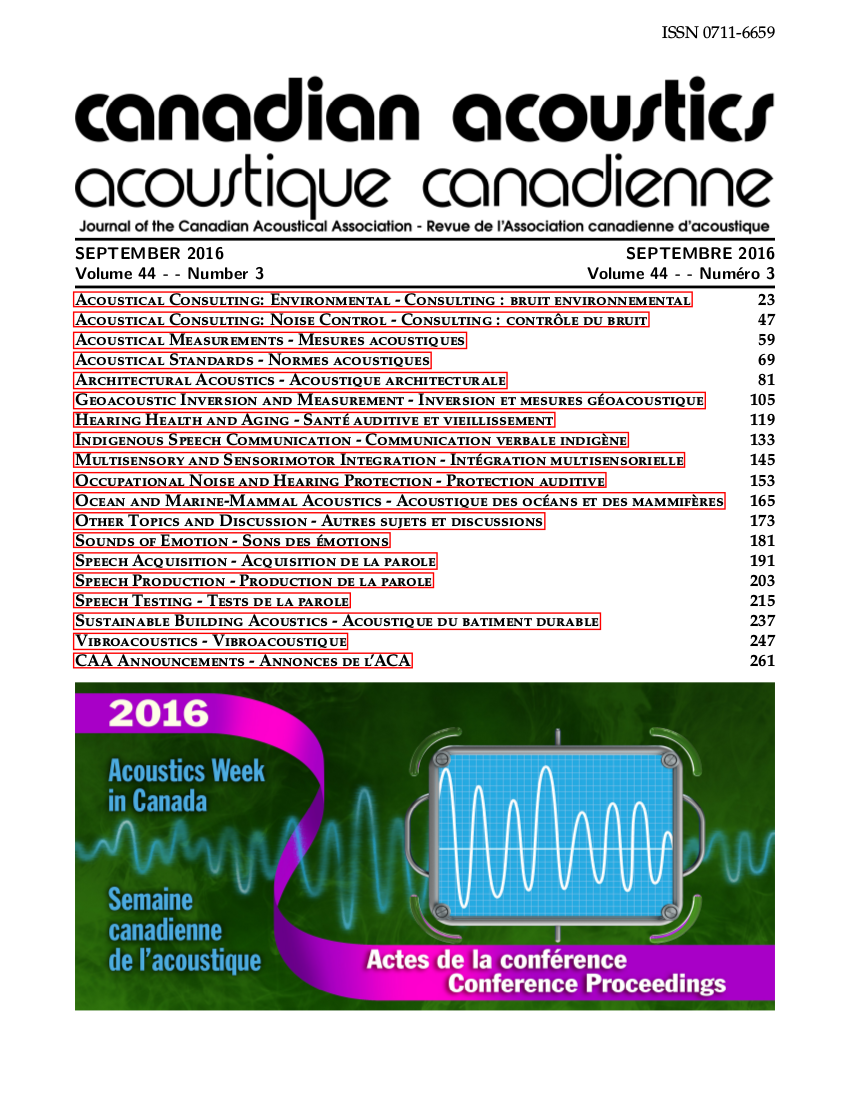LABORATORY AND FIELD MEASUREMENTS OF NAIL GUNS’ NOISE EMISSION
Abstract
Nail guns are heavily used in the construction industry by carpenters and roofers. These hand-held power tools expose their users to impulse noise and hand-arm vibration that are difficult to mitigate due to the user’s proximity to the tool. Thus, the choice of low noise and low vibration power tools seems to be a good strategy in order to reduce workers’ exposure to such noise and vibration. In this study, 10 nail guns were tested (8 framing and 2 roofing nailers). Both noise and vibration were studied, but only the noise aspect will be discussed in this paper. The goal of this paper is to present laboratory measurements and field measurements.
Laboratory measurements on the nail guns were performed using EN 12549. The workpiece (sawn pine wood) was buried in a sandbox placed in a semi anechoic room where both the sound power (using 9 microphones located on a cubic measurement surface) and the sound pressure level at the worker’s ear were measured. For the field measurements, a wireless rig was developed to give freedom of movement to the workers. The workers were sampled in real work situations. Microphones on the outside of the worker’s earmuffs were used to measure the sound pressure level at the worker’s ear.
The results of both the laboratory and the field measurements are presented. The sound power levels (LwA,1s) range between 95 and 107dB(A) and the sound pressure at the worker’s ear (LpA,1s) range between 91 and 100 dB(A) for field measurements and between 85 and 98 dB(A) for the lab measurements. The complete study includes also a quantification of the different sound source using acoustic antennas and a high speed camera.
Additional Files
Published
How to Cite
Issue
Section
License
Author Licensing Addendum
This Licensing Addendum ("Addendum") is entered into between the undersigned Author(s) and Canadian Acoustics journal published by the Canadian Acoustical Association (hereinafter referred to as the "Publisher"). The Author(s) and the Publisher agree as follows:
-
Retained Rights: The Author(s) retain(s) the following rights:
- The right to reproduce, distribute, and publicly display the Work on the Author's personal website or the website of the Author's institution.
- The right to use the Work in the Author's teaching activities and presentations.
- The right to include the Work in a compilation for the Author's personal use, not for sale.
-
Grant of License: The Author(s) grant(s) to the Publisher a worldwide exclusive license to publish, reproduce, distribute, and display the Work in Canadian Acoustics and any other formats and media deemed appropriate by the Publisher.
-
Attribution: The Publisher agrees to include proper attribution to the Author(s) in all publications and reproductions of the Work.
-
No Conflict: This Addendum is intended to be in harmony with, and not in conflict with, the terms and conditions of the original agreement entered into between the Author(s) and the Publisher.
-
Copyright Clause: Copyright on articles is held by the Author(s). The corresponding Author has the right to grant on behalf of all Authors and does grant on behalf of all Authors, a worldwide exclusive license to the Publisher and its licensees in perpetuity, in all forms, formats, and media (whether known now or created in the future), including but not limited to the rights to publish, reproduce, distribute, display, store, translate, create adaptations, reprints, include within collections, and create summaries, extracts, and/or abstracts of the Contribution.


